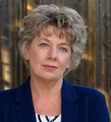J.C. Paulson's Blog
February 29, 2024
I became a character in a book
And then found myself in a group of new friends.
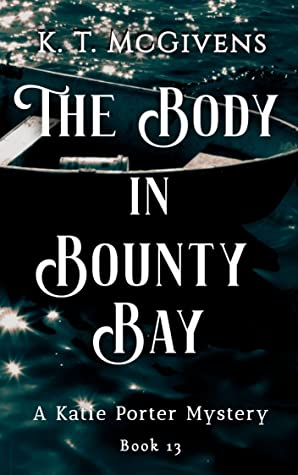
In this case, Number 13 was lucky.
Sometime in the first half of 2022, I received a message from author K.T. McGivens. To my extreme (and happy) surprise, she admitted that she was writing the thirteenth novel in her Katie Porter cozy period mystery series . . . and I was in it.
Was I okay with that?
Well, K.T. You think?
Somehow, K.T. semi-transformed me into Josephine Pepper, the journalist (like me, right) of the piece and a member of the Bounty Bay women’s group who perform socially remarkable tasks. Not to mention assist her main character with solving the crime.
By the time the work was released, it became clear that K.T. had gathered a group of six other IRL authors in her brain (not including herself) and there we were. The Citizens of Bounty.
K.T. had developed remote and unseen relationships with fellow authors Wendy Bayne, Fiona Ingram, Elana McDougall, Harriet Helfand, Erik Meyers and me. She then created characters based on her impressions of these writers. Although she had never seen them or heard their voices, McGivens intuited the authors’ personas from their own books and online profiles. The results were remarkably close to real life.
If that was not the coolest thing that had ever happened to me, what came next was
. . . remarkable.
So being an author has long been described as a solitary experience, and largely, that is true. But this group of writers has found collective strength and support through this unique origin.
“It was an experiment. Placing real people in the book as characters. So, I searched social media for those I thought might get along with each other,” admitted McGivens. “And, more importantly, my heroine would need to like them. It should have been obvious, but it honestly never occurred to me that these real-life authors would want to meet each other after reading the novel or get along so well.”
We now meet regularly from around the world via Zoom to discuss topics pertinent to writing and marketing . . . and much more. We hail from Canada, the United States, Austria, and Cyprus. Distance and time zones have proven no barriers to the group.
Recently, McGivens has also distilled some of our conversations into recordings, complete with mood music and graphics, and posted them on social media. The sessions showcase the authors’ experiences, insights, and writing aspirations. Sharing these aims with each other and the online writing community has reinforced the strong bond of the Bounty group. Like our characters in Bounty Bay, we work together to further our goals, help other authors, and to spread our love of literature.
Author K.T. McGivens
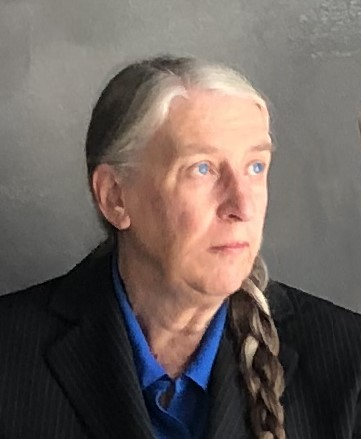
Contact: katieportermysteries@gmail.com
Website: https://katieportermysteri.wixsite.com/author
Amazon: amazon.com/author/ktmcgivens
Twitter: @KMcgivens
Meet the author characters of Bounty.
Harriet (H.C.) Helfand (“Helen Hellman”)
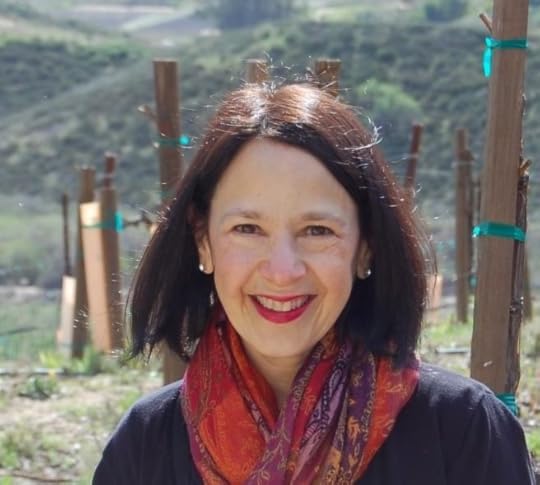
Huge appreciations to Harriet who pulled together much of this content
The town of Bounty may exist only in fiction but the connection forged with the other authors bound together in this story by K.T. McGivens is refreshingly real. To writers, characters are the heart and soul of our stories. To be immortalized by another author as a character is an honor greater than any acclaim or award. And the caring friendships nurtured by our shared experiences have become the ultimate prize. With her insight into our personalities, K.T. has done what many authors only dream of doing—she has brought life to her characters and brought her characters to life.
https://www.amazon.com/stores/H.-C.-Helfand/author/B08QZ4QTCQ
Wendy Bayne (“Winifred Barnes”)
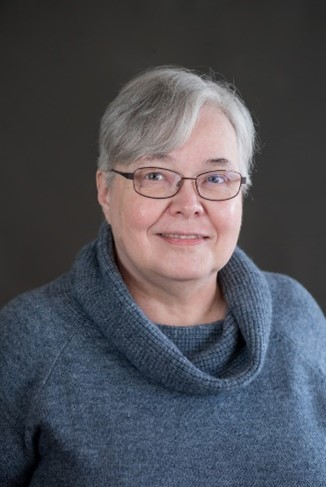
When I first ventured onto social media, I never expected to make friends with whom I could share ideas, angst, and ambitions.
But K.T. McGivens brought together six lovely and diverse people thousands of miles apart who write in different genres. The first time was when she wrote us in as characters in her book The Body in Bounty Bay. It soon followed that she pulled us together across ten time zones as a group willing to follow and support each other as authors and friends. Now, once a month, we meet on Zoom to share ideas and information.
To this day, I cannot thank K.T. McGivens enough for including me in her book and for somehow nailing all our personalities and bringing us together. One group member forwarded an article to us and the title epitomizes what I have found with them: “Writing Hasn’t Won Me Fame or Fortune, But It’s Brought Me Friendship.”
Thank you to the Bounty Bay Group and our founder, K.T. McGivens.
author.to/WendyBayne-on-Amazon
https://www.instagram.com/w_bayne_author/
https://twitter.com/bayne_wendy
https://bsky.app/profile/wendybayne.bsky.social
Elana McDougall (“Evelyn McDonald”)
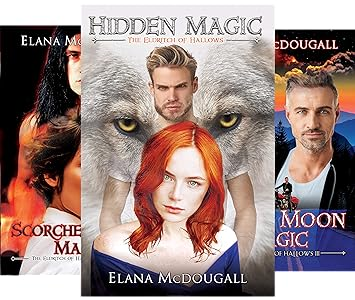
Who hasn’t wished they could be like a favorite character in a beloved novel? Jane Eyre, resilient, and independent? Legolas, facing off against an army of orcs? Anne Shirley of Green Gables, artistic and imaginative? But how much better would it be to actually become a character in a story? That was the wonderful gift five other indie writers and I received, thanks to K.T. McGivens, the ingenious author of The Katie Porter Mysteries series. We were privileged to step into the goings-on in Bounty, the setting of The Body in Bounty Bay. And what a hoot it was!
Before Bounty, we six only knew of each other through our interactions on social media. With the detective skills that her heroine demonstrates, K.T. took clues from our on-line posts and created personas which are remarkably true to who we are. At least I hope I’m as flamboyant and powerful as my alter-ego! But our inclusion in this fantastic mystery wasn’t just a stunt. Our characters didn’t merely stand by and watch Katie discover whodunnit. K.T. used our cluster of very diverse authors in a subplot which made an important point about community. Somehow, K.T. also recognized that desire to help others which we also all share and translated that into action in her story.
Because of K.T., and the magic of Zoom meetings, we have become friends in real life. And I love that I get to visit Bounty and be part of the story every time I open The Body in Bounty Bay. Come. Join us.
Website: www.elanamcdougall.com
Facebook: ElanaMcDougall MAGIC
Twitter/X: @ElanaMcdougall
The Eldritch of Hallows series:
Hidden Magic: https://www.amazon.com/dp/B088GVSZPQ
Scorched Earth Magic: https://www.amazon.com/dp/B09DBWKP1D
Blood Moon Magic: https://www.amazon.ca/gp/aw/d/B0CMDML3L1
Joanne (J.C.) Paulson (me) (“Josephine Pepper”)
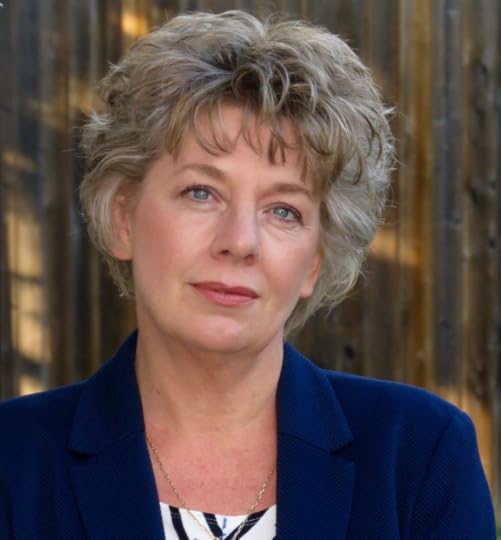
To this day, I do not know why K.T. McGivens felt I deserved to be part of the authorial-become-fictional characters group in The Body in Bounty Bay. When I read the final product, I was honoured. My character in the book is, like me, a journalist, and I can only hope to have the heart of Josephine in real life.
When I thought about it later, I was beyond honoured, and I can’t find the right word to describe that feeling. What the group accomplishes in this novel from a social standpoint (and on more than one level) is truly moving, and I — as fictional me — was part of it. Me.
As time went on, these authors became friends IRL, as they say. The warmth and support we share now across the miles fills my heart. What a truly amazing thing.
https://twitter.com/joanne_paulson
https://www.facebook.com/jcpaulsonauthor/
https://www.amazon.com/stores/J.C.-Paulson/author/B071GVF9N4
Erik S. Meyers (“Edward Minor”)
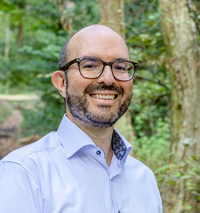
Currently in Vienna, Austria, I am an American who has lived abroad for years in six countries on three continents, the longest in Germany.
I am so honored to be a part of the Bounty Group. We support each other, we share writing tips, and we enjoy each other’s company. Thank you to K.T. McGivens for bringing us together in her book and now as great friends off the page as well!
Book links:
Death in the Ozarks: https://www.amazon.com/dp/B0CKWT4FY2/
Caged Time: https://www.amazon.com/Caged-Time-Tarniss-desire-faith-ebook/dp/B08VRCR5FS/
https://www.facebook.com/ErikSMeyersAuthor/
Fiona Ingram (“Freya Graham”)
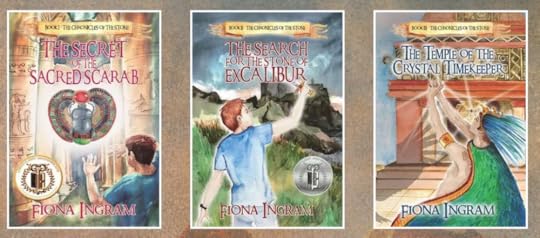
I was curious about the prospect of appearing in anyone’s book; curious and a bit nervous since the author, who had never met me, was going to create a character based on my Twitter profile and my tweets. I wondered what these would say about me. Author K.T. McGivens got my book character down to a T. It was me. Reading about myself was a unique experience and I just hoped that readers would like “me” in the book!
Then I was curious about the other characters, and why had these other authors been picked? When K.T. suggested an online get-together, I also wondered if I would have anything in common with them since we all seem to write in completely different genres. Would we have anything to talk about? I couldn’t have been more surprised and delighted. As authors, no matter our genres, we all have the same fears, problems, issues, and worries and we all naturally came together in support.
What a warm, friendly, supportive, and caring group has been formed from something that started out as a fun twist in a book. This group has grown from a meet-up to a fantastic author support group where we help to promote each other and give advice, suggestions, and share good old-fashioned camaraderie, something that is missing in the world today!
Contact: fiona@fionaingram.com
Author Site: https://www.FionaIngram.com
Blog: https://fionaingramauthor.blogspot.com
LinkedIn: https://www.linkedin.com/in/fionaingram
Twitter: https://twitter.com/FionaRobyn
Goodreads author page: https://www.goodreads.com/fiona_ingram
Amazon: https://shorturl.at/dOPRW
September 7, 2023
Author J.G. MacLeod's novels travel through time and passions
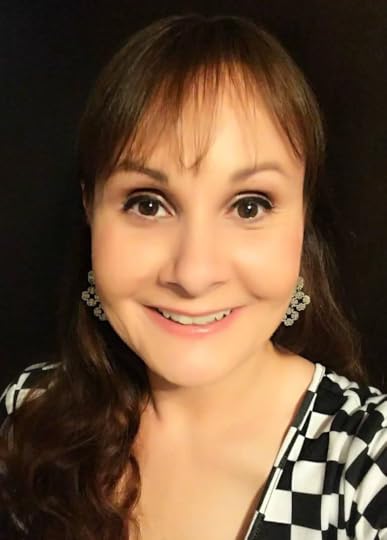
How did an extremely shy, socially awkward introvert who had two concussions before the age of 10 decide to become a published author?
Read on to learn all about Canadian author J.G. MacLeod.
Well, perhaps the answers are interconnected. As a child, I enjoyed spending time outside, often in pursuit of adventures like climbing trees, sledding off the side of train trestles, hiking, building snow forts, and watching the stars until my parents forced me to come inside because they thought I might freeze.
I continued to observe things (and people) while also partaking in a variety of athletics (baseball, gymnastics, track-and-field). I daydreamed a lot, creating stories in my mind whenever I wasn’t reading voraciously.
I even gave up watching TV for a whole year (a bet I made with my father) to earn $200 in fourth grade. That intensity and determination helped me earn two university degrees and succeed as a teacher (22 years and counting).
My three daughters are my greatest joy, and my favourite time of year is summer. In my spare time, I garden and pamper our pet rabbit, Buddha.
You’re a prolific author of historical fiction, time travel and romance. How did you choose these genres? And how on earth do you fit in so much writing with your busy real-life schedule?
Honestly, I feel as if the genres chose me, to be honest. All of my historical fiction work came about serendipitously.
For example, my first historical romance trilogy was inspired by a trip I took to Ireland. While walking through Kylemore Abbey (formally ‘castle’), I read about a family who used to own the estate, as well as what became of them. It instantly made me wonder what it would feel like to be one of the children living in such a tumultuous situation. As I travelled further around Ireland, a story began to take shape in my head to answer the first question and connect it with other notable figures in Irish history. That is why I believe the genre found me.
Working two jobs and caring for children and an aging parent leaves little time for me, but I try to dedicate an hour every evening to the craft of writing.

Let’s talk about the books. First of all, because I love them, tell us about The Future Bride and The Past Love, as well as the third book coming in that series. What was your inspiration?
These books were so much fun to write and began when a friend of mine suggested we both join one of those DNA-analysis companies that provides insight into one’s lineage and helps compile genealogical information. I have an uncle who spent the greater part of his life involved in this type of research, but when I had my DNA analyzed, the results were instant. I was able to fill in ancestors on my family tree back to the medieval era! One branch showed the MacLeods and the MacDonalds intermarrying. It led to a great deal of research on my part and, four history books later, I had begun to dream about these people I’d never met and would never know in real life.
At the same time, my eldest daughter was becoming more involved in karate – specifically Shotokan – and I began taking notes at all of her practices and competitions. (Whenever I write ‘fight’ scenes, she actually demonstrates the moves for me in real life so I can describe the scenes in greater detail.)
The closer was the trip I took up north. We started with Sudbury and North Bay, but went further. I cannot explain what happened, other than to say it was inspiring on a spiritual or emotional level beyond anything I’d ever experienced before.
As I moved through the forests, I started to feel as if there was a presence in the trees. That feeling became almost a frenzy of adrenaline that came out onto the page when I returned home. I wrote 11,000 words the first day, barely eating or drinking. This continued every day for several days. I had never experienced anything like it. An entire story was formed in my head. The first book introduces readers to the nature of the time travel (seemingly random, nonlinear, and involving a desperate desire on the part of the MacDonalds to secure Brigid into their clan). Ferghus finds Brigid and has other plans. Book Two was necessary to show readers that the time travel has occurred many times, but Brigid does not retain a memory of that travel; thus, there has been many versions of Brigid meeting all of the characters in the world, as well as multiple versions of them (because her actions alter the future every time she travels).
Book Three is set for release this year and will conclude the story in an epic way. The mystery of the time travel will finally be revealed when Ferghus is transported to our time period, and they must choose between survival and love.

Also, you decided to write parts of these books in Gaelic with translations. I loved this. Was that difficult to do?
The language is labour intensive. Some of the language is in Scottish Gaelic, while colloquialisms are also integrated – some learned from research, and some from growing up with a Scottish grandparent. I knew when I set out to write the book in this way that the effort to capture the language barrier that Brigid and Ferghus (and others) experience would be challenging, but I felt it was necessary to create a realistic tone for the trilogy. If readers become frustrated that they cannot understand Ferghus, imagine how Brigid must feel! (Well, they no longer have to!) And when Ferghus grows equally frustrated with Brigid’s speech, we can begin to understand why. The barrier was also included for comedic effect because sometimes Ferghus lies about what he has said to Brigid, which creates dramatic irony.
You’ve also written The Adventures of Lady Ellen Montagu. This series has found considerable success in Canada, as I understand it.
Yes, this series was an enormous undertaking but seemed to resonate with Canadian readers as I moved through the story arc. As I mentioned before, it began while I was in Ireland, but I set the third book in Canada where Lady Ellen journeys with her growing family to be safer during the famine. It was enjoyable to do archival research from the 1840s so I could capture the setting accurately. A few members of the infamous Donnellys make a cameo in one part of the book, too. In many ways, New London is my best written book in my opinion.
Tell us also about your two standalones, Abalone and A Moment In Time.
Abalone took over 15 years to finish. I wrote about 50 pages initially and returned to it when I was free to work on it consistently. The subject matter is painful, involving domestic violence (not romanticized) and mental health crises, but like all my books, there is a silver lining with hope for healing at the end.
A Moment in Time was my first foray into weaving some of my experiences from adult education into my writing. It was also a challenge I gave myself (to write from two POVs instead of just one, as well as a male POV). I also wanted to try to write a unique sci-fi tale with strong romance vibes. In addition, this story emphasizes the habit of prejudging other human beings without knowing them first. Ironically, I have had people judge the book before they have read it, because they assume the ex-con character is evil, and the teacher character is angelic. This was the entire purpose of writing the story: to show how we are all imperfect, struggling with inner trauma from past hurts, and that empathy can allow us to see the true person beneath the guise.
Why do you write both standalones and in series?
It’s really a matter of the scope of the story for me. I always know how my stories begin and end. Usually, it’s clear from the beginning whether this story arc will fit into one standalone, but every once in a while, I have no idea how many words the final book will be.
With The Adventures of Lady Ellen Montagu, I knew the arc, but had no idea it would take me three books to tell it. With The Future Bride series, I knew it would be a trilogy because I had a better grasp of the pages needed to complete one book when I started it. Abalone was my debut and because it was such a painful process (both the writing and editing), I never wanted to have to revisit that in a sequel or series. A Moment in Time is a standalone that involves two specific characters (and supporting characters) who meet in an adult education school. I have contemplated writing spin-off books that tell the stories of some of these side characters, but I have so many other projects that I want to complete first.
What is your process? Do you start with a plot, a concept, a character, a message, or something else?
The story concepts often come about accidentally, through travel, through dreams, and other life events. It is unpredictable. Once that inspiration occurs (A Moment in Time came to me in the middle of a movie theatre about a completely unrelated film), I usually dream about the plot and characters for ages before I start writing. Once I begin writing, I know where the characters need to go (the setting, the large conflicts, the crisis, the conclusion), but never exactly how they will choose to get there (they can be rather stubborn!).
What is next for you?
I have 3 WIPS currently. The Once and Future Love will be released first, but I have a Hallmark-style standalone and spicy romance story that I write periodically, too. I try to have different projects to turn to when the mood shifts.
Thank you so much, Jenn, for sharing your story.
Please find J.G. MacLeod at the links below.
Links:
Twitter: https://twitter.com/jgmacleodauthor
Website: https://www.jgmacleod.com/
Amazon: https://www.amazon.com/stores/J.%20G.%20MacLeod/author/B07F25Z73T
The Future Bride: https://www.amazon.com/Future-Bride-MacLeod-Time-Travel-Romcom-ebook/dp/B07YK4J8VY/ref=tmm_kin_swatch_0?_encoding=UTF8&qid=&sr=
November 30, 2022
Author CP Daly's detective emerges from a dark, difficult past

CP Daly writes her mystery thrillers from the east coast of Canada, and I'm thrilled to host a fellow Canadian crime author on my blog.
The development of Kelsey Woods, her detective, is fascinating and unique. Read on to learn more about CP, as well as Kelsey's difficult past and her survival instincts.
You are the author of the Kelsey Woods mystery/thriller series. Why did you decide to write it?
While on a family vacation twenty plus years ago, I watched a newscast that caught my attention and my imagination. It was regarding a corrupt prison. The police had arrested prison guards, and other prison staff, who were involved in smuggling prostitutes into the prison at night. Prisoners were paying the prison employees for time with the prostitutes. It was a regular occurrence within the prison, and many of the inmates with financial means were involved.
My mind immediately started to bounce around all sorts of scenarios. What kind of girl would agree to be smuggled into a prison in the middle of the night? Certainly, not by choice. Desperation? Fear? Money? Drugs? Were the girls forced? By whom?
This stayed with me, and many years later I began to write about it. I tried to write a sensitive story of a girl who believed she had no options, no family, and no support system. She made bad decisions, for money, for a roof over her head, to survive. My main character did not see herself as a victim; this was a choice. An end to a means.
Suzie, my main character, was in it for the money. It paid well above what she would have made if she had worked the streets. In her mind, this would fast track her for the fresh start she dreamed of — moving to a new city and living a life she could be proud of. She wanted to make something of herself, get an education, be safe and have a place to call home.
But of course, I write thrillers. The road to happiness is a bumpy one.
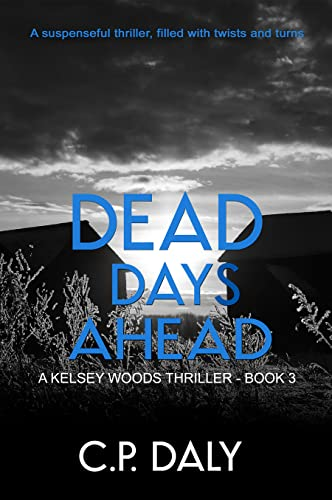
Tell us a bit more about your main character.
Suzie is a girl with attitude. She makes bad decisions, and somehow justifies them to herself. She’s also a product of her environment. Adopted at a young age, and then returned through no fault of her own, she was placed into the foster care system.
There are so many layers to this girl, and as we peel away the layers, we get a glimpse of how damaged her thought process has become. Years of self-preservation will do that to a person.
I adore Suzie, flaws and all. She is determined to make something of herself, and to find a place to call home. She does not see herself as a victim, but as a woman who does what is necessary to move forward in her life, a survivor.
Suzie takes on a new identity for her own safety. She becomes Kelsey Woods, and that is how The Kelsey Woods Trilogy came to be.
Tell us a bit about yourself. Why did you become an author? Have you always written, or was there an inspirational moment?
While raising my family, I wanted to do something for myself, a night out. I enrolled in a creative writing class at a local university. It was wonderful and intimidating at the same time.
This led to more classes, and many short stories. I was hooked.
Writing a book was not on my radar; that was for people who lived in exotic places. Definitely not a girl from the East Coast of Canada.
The years flew by and my passion for writing grew. It wasn’t until after my family was grown and I retired that I took my writing to the next level. At the age of sixty, I found myself with a completed novel, Dead After Midnight, and now a completed trilogy. No one is more surprised than I am.
Little did I know the real work had just begun.

Can you share some fascinating personal facts?
Sorry to disappoint. I’m confident I don’t fall into to the fascinating category by any stretch of the imagination. I live a simple life on the East Coast of Canada. I love where I live and the people who make it special. I’ve been blessed with a wonderful family, six awesome grandkids and people who I am lucky enough to call my friends.
I consider myself to be a disciplined and self-motivated person. I start my day early, around six-thirty in the morning at the local pool (to the horror of many of my friends who think I’m nutty to get up so early). After my swim, my writing day begins. I like to change up where I write, from home, to the beach, library or coffee shop. Change of scenery helps with my creativity.
Do you have some favourite authors who have inspired you?
Many authors have inspired me. I’m in awe of talented, prolific writers, who never disappoint their readers in getting books out there. I respect and admire their work ethic. It’s hard work, writing a novel, and coming up with new ideas to sustain a novel.
I have eclectic reading tastes and admire a variety of authors, as I learn from all of them as my journey in writing evolves. A few authors I look up to and find their work inspiring and are masters in their genres: Louise Penny, Harlan Coben, Stephen King, Karin Slaughter, Agatha Christie, Linwood Barclay, Lisa Scottoline and Sandra Brown. I could go on and on; there are so many talented writers, and many more to discover.
Do you write in other genres?
I consider myself to be a thriller/mystery writer, although, I do have plans to write a contemporary romance novel under a pen name in the near future.
What are you working on now?
I am working on my first stand-alone thriller set in Nova Scotia. It’s about three girls who were besties throughout their school years and are reunited twelve years later. Murder and secrets are revealed as they reunite.
I would love to be able to share the title with you. Sadly, I struggle with titles, and never come up with one until after the book is completed and back from the editor.
It will be released in 2023.
Thank you so much, CP. It’s been wonderful getting to know you, fellow Canadian author.
Thank you, Joanne, for guesting me on your blog. I am grateful for the opportunity. I wish you great success in your writing endeavors.
You can find CP Daly and her books at:
Links
Website: https://www.cpdaly.com/
Facebook: https://www.facebook.com/cpdalyauthor
Twitter: https://twitter.com/CP_Daly
Amazon: https://bit.ly/cp-daly
November 26, 2022
Mixing mystery with history: Kimberly Mullins
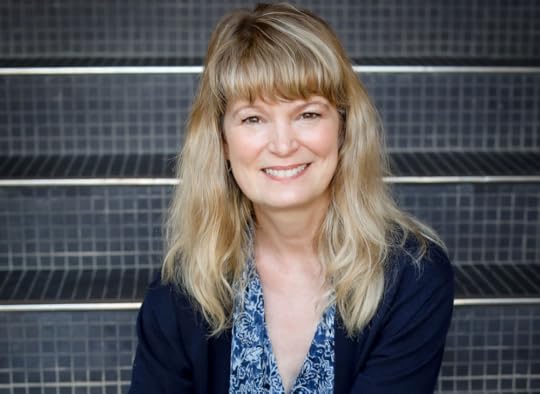
When I met Kimberly Mullins in an authorial community, I thought I'd like to get to know her better. After all, she combines two of my favourite genres in her books: mystery and historical fiction.
She is the author of the Notebook series led by a "strong woman out of her time" — Emma.
Please meet Kimberly Mullins.
Can you tell us about the origins of this series? Why did you decide to write it?
I initially started writing to just see if I could do it. What came out of it was my first book, Emma in the Notebook Series. Turns out I love writing.
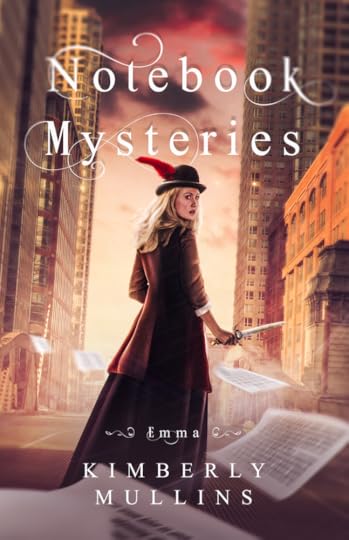
Tell us a bit more about your detective, and why the books are located in 1880s Chicago.
I have always been fascinated with late 1800s. When I was researching the time period, I knew I wanted to start with the Great Fire of 1871. There was so much going on at the time — people immigrating, rebuilding.
My main character is a woman outside of her time. Emma is a strong woman in a time when history dictates that she isn't. She loves adventures and carries a knife. Skilled in observations — she sees things most do not. She is 16 in 1881 and with each book, she ages up. I wanted to show how she would grow and change with her experiences. I wish I were as brave.
Which genre comes first in your writing?
I am always told I am writing across genres. I think they are even. When I start a book the first thing I do is look up what happened the year I am writing in.
Tell us a bit about yourself. Why did you become an author? Have you always written, or was there an inspirational moment?
I think I always wanted to write, but I hid or tore up most of my stories. I was too embarrassed to share. When I was a teenager, I would think about the book I was reading so much, and I always chose a different ending. I wish I had started earlier.
Can you share some fascinating personal facts?
I have a wonderful son and husband. I am an engineer full-time with a large chemical company. We live in downtown Houston and we love all of the activities here. I can't wait until I can write full-time and not for an hour each night.
Do you have some favourite authors who have inspired you?
Elizabeth Peters; her storytelling would just draw me in. Nora Ephron was funny and amazing. And of course romance writers Kathylene Woodiwis and Laura McBain.
What are you working on now?
That is a complicated question. I am always in the middle or end of something, LOL.
Notebook Mysteries books 5 and 6 are ready to go for 2023. I have an outline for my 2023 Christmas novella.
I’m also writing a spin-off book. It involves Mark from my series. He is all grown up and off on his own adventures. Hopefully, I will have it ready to publish in September of 2023.
Divided Lives under the name K.R. Mullins was a new book for 2022. I am considering a second book but I’m unsure of when.

Ah. So there’s another book.
Yes. Divided Lives is an adult novel set about 20 years in the future from where my books are now.
This one involves one of the babies as an adult and her life choices.
I picked Greenwich Village and when I started researching, I felt I had to tell an authentic story. It didn't feel like it could be a clean historical fiction book — the people drove the story on this one.
I also enjoyed the research on the criminal case in the book. it was fascinating. I spent three months just getting that part right.
I think this will become a series eventually, but will not interfere at all with the Notebook series.
Thank you so much, Kimberly.
Find the author's website here:
http://kimberlymullinsauthor.com/
As Kimberly Mullins on Amazon:
Amazon.com: Kimberly Mullins: Books, Biography, Blog, Audiobooks, Kindle
Widely available on Kobo, GooglePlay, Barnes and Noble, Apple and Amazon.
As K.R. Mullins on Amazon:
https://www.amazon.com/K-R-Mullins/e/B0B9KJC1L2
November 20, 2022
An ER can test your heart . . . in more ways than one.

There is no better place to observe humanity than the emergency room.I’m delighted to say I had not been in an ER for myself in years, although I have been in the hospital for various life explosions several times over the pandemic period. Unfortunately — or perhaps fortunately, I’m not sure yet — I had occasion to visit the madhouse recently.I suppose I should have known better. I’ve been trying to survive a particularly blue mood over the last wee while, for reasons I won’t list, accompanied by various unpleasant physical symptoms. Why couldn’t this strange sensation be one of them?But it felt different. It felt like someone was crushing my rib cage. Like someone had wrapped a lasso right around my mid-section, and was pulling, tightening. Hard.I wanted to ignore it but simply couldn’t. I’d never felt anything like it before, and I was simply scared. I asked for advice and was told to see a doctor immediately. I did this. The doctor hooked me up with one of those tests and saw a “blip.” So off I went to emerg upon his insistence.“I’m calling in the morning to check on you,” he warned, and called the hospital to inform it of my arrival.I couldn’t really see as I drove myself there. Note to self: don’t do that again.Still, safely parked, I walked in, announced myself, and was immediately triaged. Immediately had vitals taken. Immediately thereafter had my second ECG. And was sent to the waiting room to, well, wait.Some time later, an intern interviewed me. She was sweet and very kind. Then I was sent to the waiting room to, well, wait some more.A considerable time later, I had another ECG. Blood work taken. An x-ray. Then another ECG. Good heavens. How many people were going to see my breasts today? After a certain point, you just bare the body parts and say what the hell. Fling them out there. They’ve seen it all before, I would think.So you have these moments of terror, and moments of boredom, and moments of misery. And you wait.And you watch. And you wonder.A young man came in, obnoxious as hell, bearing three enormous bags (what was in them, eep?) Refused to wear a mask. Continually pestered the staff. Eventually, they threw him out … but security stayed in the entrance and kept an eye out for him. Shiver.The poor guy in the wheelchair behind me was puking.Another guy at the other end of the room was peeing.A young woman with skinned knees across from me was shuddering with pain.An older woman begged me to save her chair when she needed to use the bathroom.A drunk older couple yelled in the corner. Every time a nurse called someone’s name, they would assist in finding the patient. “BRENDA!” they hollered. “EVENING!” Yes, there was young man there named Evening.Speaking of evenings, this one wore on. The nurses kicked out everyone who was not a patient, with a couple of exceptions. There were not enough chairs. Not even close.We sat cheek by jowl in the crowded triage and waiting area. No COVID distancing here. Not possible.The doctor finally called my name and took me to a private room (this was a rarity; people were getting their health news in public, for the most part. Simply no space.) He apologized for the wait, explained that the hospital was full, and said … well, it’s not your heart.By this time, the pain had subsided, so I was clearly not an urgent patient for any other reason by then.I’m going to let you go, he said. By the way, you have a very low risk of heart disease. Somewhere between 0.8 and 1.47 (out of 100, I gathered, but I don’t really have any idea.)More investigation of other body bits may be needed and I will be cranky if I get COVID, but apparently, my diaphragm was so badly in spasm, it had formed a knot in my chest. Hmmm, could that be the source of the pain (duh)? Good thing stress does not cause problems when held in our bodies, am I right?You may wonder why I am boring you with my little health scare story. After all, I am fine. Well, at least my heart is pounding.I have felt of late that I should stop writing, a brain signal one should not ignore.But as I sat for hours in the ER, I realized that I was essentially writing the entire time. A short story about my own experience. Little back stories about all these sick, injured, terrified (and terrifying), disgusting, sweet, kind, moaning, yelling, young, old, and sometimes lonely people. Who were they? Did I care?Yes, I did.I am a writer. I cannot help it. I may be a good writer or a bad writer. I may sell books and articles, or I may not. I may entrance or engage or enlighten or entertain or educate you with my words, or I may not. But I am a writer.If you are a writer or other creative human reading this, and you too are doubting yourself, wondering whether you should continue creating, I hope it does not take a trip to the emergency room to give you the answer.Photo by Maxim Tolchinskiy on Unsplash.
I'm talking here: Dialogue tag tips for authors

While wearing my second hat as editor, I see a lot of dialogue tags that are perhaps not perfect. And so, I thought I’d share a few pointers for those who don’t feel 100 per cent comfortable with a very important aspect of writing a novel.1. Use sparingly. When we must use them, 99 per cent of the time we use a comma after the comment, then quotation marks, followed by ‘he said’ or ‘she asked.’ Question marks and exclamation points do not require commas.“Why are you teasing that dragon?” he asked.“I want to see the fire come out of his face,” she said.2. There are several tricks you can use to identify your speaker without peppering your copy with tags. For example, stop a longer bit of dialogue in the middle and add a bit of action.“This murderer must be caught.” Adam poked the photo with his finger. “Today.”In this case, punctuate with periods, not commas. There is no direct tag.3. Any breaks in the action will take your reader out of the story, but let’s face it. Dialogue tags are often necessary.To keep that disruption to a minimum, restrict dialogue tags to said or asked most of the time. This gives you some leeway to add punch when you’re writing a particularly powerful or climactic scene.For example, my main character – yup, Adam – has a very loud voice. So once or twice in a book, I’ll use a big verb to demonstrate that – like roared or bellowed. Something you don’t see every day. It also helps define the character.4. It’s best not to use a different tag after every single quote in a conversation. It will drive your reader mad.For example, “he inquired” followed by “she answered” then “he expostulated” then “she demurred” and so on. It becomes wearisome.5. Be sure your tag IS a tag, not an action. She inquired, maybe; but not she shrugged. He continued, perhaps, but not he smirked.Shrugged and smirked are actions, not tags. Should you REALLY want to add a smirk or smile or laugh or frown, try this:“I’ve decided that I will now stop writing this boring blog,” she said, grinning.
October 15, 2022
White Terror
A ghost story.
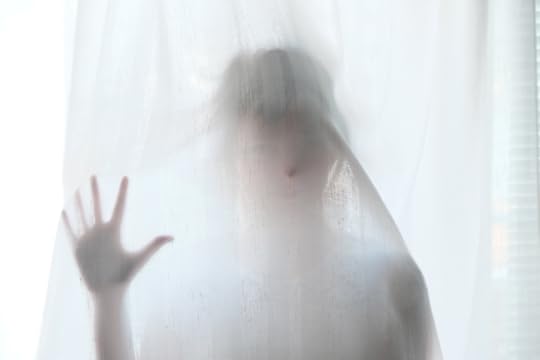
There is a majestic old hotel in a city several hours away from my hometown. Built in the early 1900s, it has been visited by queens and kings, stars of screen and stage, politicians and pundits, vacationers and businesspeople.
I, on this trip, was one of the last group. We had been called to a meeting of the minds to advance our prospects in the newspaper industry.
I had been to the Fort Garry before. It is a majestic, austere, massive building with long silent hallways and tall, ominous-looking elevator doors. Very much like The Overlook in The Shining, really, if a bit smaller and less remote.
Over the years, I had heard many stories about this hotel being haunted. One of the legends has it that a young woman awaited her new husband, or husband-to-be, in Room 202. Tragically, he was killed in a traffic accident — whether by automobile or horse and cart, I cannot say.
She killed herself that night out of raging grief. Now her spirit awaited the unsuspecting traveller. She appears, they say, in a flowing white gown, perhaps her bridal dress, at the end of the bed. Sometimes a small piece of fabric will be found on the floor. Sometimes the closet door will creak open. Sometimes footsteps can be heard, often falling wetly on the bathroom floor as if she has just emerged from the bath.
Sometimes, she weeps.
Bosh, I thought. Great story, but really? A ghost?
When we arrived by taxi at the soaring front doors, my colleagues and I tramped inside. Me, Kelly, and Jack, the three musketeers of editorial, advertising and marketing.
We checked in and collected our keys. We found ourselves in the elevator pushing button Number Two. All of us had rooms on the Second Floor.
“Which room are you in?” Jack asked.
“I’m in 205,” I said . . . with a small intake of air.
“You okay?”
“Yes. Of course.”
“Kelly?”
Silence, for a moment.
“I’m in 202,” he said, then looked up with a grin. “The haunted room, isn’t it?”
Jack and I both nodded and laughed nervously.
“You want some company in there?” Jack asked, since of course it would not have been all right for a married woman to ask such a thing of a married man.
“Nah, I’ll be fine,” Kelly said. “I don’t believe in ghosts.”
“Me neither,” I said.
“Me three,” Jack said.
A long, long day of meetings ended in dinner and drinks, then falling exhausted into bed.
But just before midnight, I heard a great thumping. As of pipes banging in the walls. But it was summer. The heating wasn’t on. Hmm. Curious.
I crept out of bed and pushed my ear up against the wall. Then the other. Nothing.
I opened the door to the ominous hallway. I saw no one. Heard no one.
Back in bed, however, the thumping continued.
After a while, ears plugged, I fell asleep.
The next morning at breakfast, and having forgotten about the thumpings, I was late to the omelette lineup, where Kelly and Jack were already awaiting their eggs and bacon.
“Good morning,” I said, sidling up. “How did you sleep?”
“Fine.," Jack said. "But Kelly, not so much. Tell her, Kelly.”
He poked Kelly in the ribs, and Kelly turned around . . . his face as white as the hotel’s bedsheets, which is saying something at this grand old dame.
“I can’t explain it,” he said. “But something was making a lot of noise most of the night. Didn’t get much shut-eye.”
“I heard something too,” I admitted. “A thumping noise. Couldn’t figure out where it was coming from.”
“You did?”
I nodded.
“I . . . saw something too,” Kelly said, voice low. “In the mirror. A woman’s face.”
I laughed. “Good one, Kelly.”
But there was no evidence of hilarity on his face. He shook his head.
“You’re not serious.”
“Yeah. Bit weird. Gotta admit it kind of freaked me out.”
“Could it have been a reflection of something? Is there a painting on the wall? Was it dark?”
The questions spilled from my mouth. He shook his head. “I’ve asked for another room.”
I was gobsmacked. He was really, honestly upset.
But there wasn’t another room to be had. The hotel was full.
That night, Kelly told us the next morning, it happened again. His face was drawn and grey.
But this time, he also heard a soft voice calling him. He wasn’t sure if he’d heard the words correctly, but the voice was a woman’s and she said his name. “Come to me, Kelly,” or something like that.
“This is ridiculous,” I said. “Linda or someone is playing a joke on you. Go stay with Jack tonight. You have to get some sleep, dammit.”
“Yeah. Maybe I will.”
“You’re welcome to,” Jack said. “Two beds in my room.”
The day went on much as the previous two had. Long meetings. Late dinners. Even later drinks.
Finally, Kelly said, “I have to get some sleep. See you tomorrow.”
“Aren’t you going to sleep in my room?” Jack asked.
“Nah,” he said. “This is stupid. I’ll wear ear plugs. Good night.”
I heard the thumping again that night. Louder than it had been two nights previously. This time, I found it hard to get to sleep. Something was . . . off. Even if it was a prank, it was a damned unpleasant one and someone was being nasty.
The last morning in Winnipeg. Thank God. I met Jack and the others in the breakfast room, ordered coffee and juice, and again went to the bar.
“Where’s Kelly?” I asked Jack.
“Dunno. I texted him but no reply.”
“Not like him to be late. I wonder if he didn’t sleep well again.”
“Yeah.”
We were quiet over breakfast. Kelly did not appear by the time we had finished. We worried that he’d be late for the final meeting, or maybe he had simply come down with something?
“Text him again.”
No response.
“We better go knock on the door,” I said with a sigh. “What if he’s unwell? Even if he doesn’t come down for the last meeting, we have a plane to catch later.”
“Yeah. Okay, let’s go.”
We loped up the stairs, arrived at Room 202 minutes later, and banged on the door.
“Kelly!” I cried. “Wake up, dear!”
No answer. Jack hammered harder and yelled, “Come on, Kelly! Not funny, man.”
Nothing.
Truly alarmed by now, I ran back down the stairs to the front desk.
“I’m worried about our friend,” I gasped, out of breath from my dash. “Could we please go up with a hotel key and check on him?”
I was thoroughly interrogated by the front desk manager, but he finally agreed.
Back up the stairs. The manager also banged on the door, asking if Mr. Brown could please open it.
Nothing, again.
Then he slipped the key into the slot and opened the door.
Clothing was everywhere, spread onto the floor and bed in a haphazard mess. Kelly’s phone sat on the bedside table; the contents of his grooming kit spilled onto the carpet. Wineglasses and coffee cups had been tipped over, the dregs of their contents staining the sheets and coverlet.
A tiny scrap of white satin sat in the middle of the mess.
And Kelly . . . Kelly was gone.
(Photo by Steinar Engeland, Unsplash. Thank you.)
July 12, 2022
Spies. Smugglers. High society. The historically fictional world of author Wendy Bayne.

Welcome, Wendy. I’m thrilled to be interviewing a Canadian historical fiction writer, especially since your books are also mysteries. Could you tell us a bit about yourself?
I will soon turn 69 and have been writing for seven years. I’m a wife, mother and a retired Critical Care Registered Nurse. I have been fascinated with the 19th century since I was a child and lost myself in the works of well-known authors such as Jane Austen, Charlotte Brontë, Charles Dickens, and Thomas Hardy.
Books have been an essential part of my life, and I have always been an avid reader. My love of the past continued through school. I was a history and literature geek in school with a penchant for storytelling. I have remained fascinated with the past and my love for the written word throughout my life.
When did you start writing fiction, and why?
I started writing seven years ago as I was housebound and waiting to have cataract and knee surgery. I think I had read every book in the house in a few months, and daytime TV was so dull I just started playing around with a story by putting words to paper.
Before I knew it, I had a book. I hadn’t told anyone I was writing. Finally, I asked my husband and son Eric to read it. They were hesitant at first, expecting a bodice ripper. Eric returned after several days, and I waited for him to say I was crazy. But he loved it. I thought he was nuts since Stephen King was his favourite author. A few days later, I got the same response from my husband.
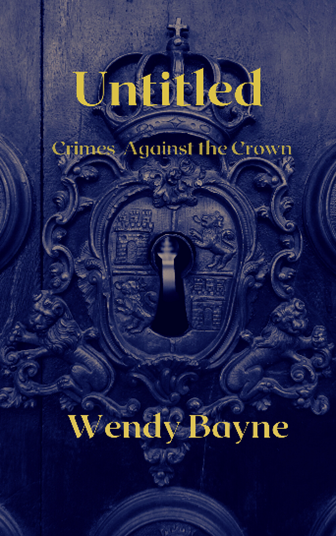
Please tell us about your books. How many have you written?
I have published seven, and I am currently working on book sixteen.
I tend to draw on social and political commentary from current times and merge it within my books. My main character is quite progressive. She transcends the structure and inhibitions of her time.
My books are a series and chronological. But it isn’t necessary to read them in order.
My plots centre on a family and group of friends from various backgrounds, socially, racially and financially, though many characters are members of the beau monde (high society).
One of the things I find fascinating about you is that you do not “write what you know.” You were a registered nurse, but you do not write contemporary medical thrillers, for example. I believe your first work is peopled by smugglers and spies. Can you talk a bit about how you chose your genre(s)?
Writing contemporary medical thrillers doesn’t hold any interest for me. I guess you could say I have been there and done that. I worked in ICUs, both in Canada and California. When open-heart surgery was still relatively new, people died from AIDS before we knew what it was. Paramedics were a new concept, and trauma care was evolving rapidly. I lived it. I can’t see myself writing about it.
I chose the post-Napoleonic period for my books because I love the era. It was such an exciting time and place – it was a world aswirl in silks, seduction, and intrigue. It was a period also full of political and economic duplicity. Radical new ideas and innovation were clashing with the past’s conventional thinking. Society was changing, and people challenged class norms and their society’s fundamental values.
As a result, there was a renewed interest in the novel during the late Georgian and Victorian eras. A running theme of those books was a social commentary satirizing the nobility’s lifestyle and offering keen observations regarding the class and gender distinctions of the time.
Are you one of these people who gets up at 5 a.m. and writes for four hours?
I haven’t seen purposely seen 5 am since I retired. I write throughout the day. I am not tied to a clock or a word count.
And do you have sticky notes and charts all over your office, or do you rely largely on your brain to keep you organized?
I write on a laptop in my living room. I have extensive Excel spreadsheets to keep track of family trees, physical characteristics, societal positions, place names, pets, etc. However, I write on the fly and do not plan out my books.
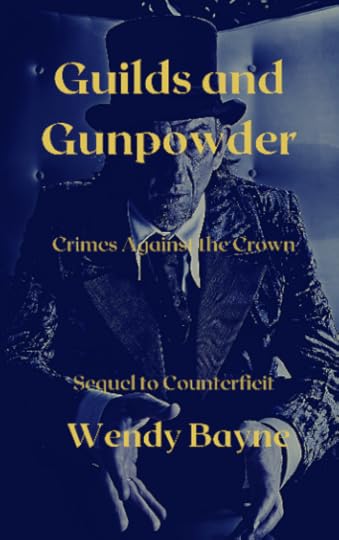
What are you working on now?
The 16th book in my world of Crimes Against the Crimes is the second part of a book I am tentatively calling the American Delegation.
Where can we find your books?
I am exclusively on Amazon and Kindle Unlimited: ,,author.to/WendyBayne-on-Amazon.
April 3, 2022
COVID left me at a loss for words

Today is the book birthday of my fourth novel, Griffin's Cure.
When it landed two years ago, we were in pandemic lockdown, and had been for three weeks. COVID was new and scaring the hell out of us all. What would this bizarre virus do to us? It clearly produced terrifying effects, filled our hospitals, and had the potential to kill.
I agreed with the measures taken by our government. I followed them to the letter. I am happy I did.
But on the book front, that wasn't frustrating AT ALL. Along with the restaurants, gyms, a plethora of stores and myriad other public places . . . the bookstores were closed. Including the one, of course, that carries my mysteries.
Ergo, no book launch.
I must say I was devastated, even more than I would have been with another book, because Griffin's Cure dealt with the potential discovery of new drugs derived from a unique fungus that could treat various inflammatory disorders and infections.
I doubt my little chiral mushroom would have been any help on the COVID front. But still. There were elements of the book that might have chimed at the time, and I could not get the word out. And not just locally.
News organizations were covering nothing but COVID. Books were flying off the Amazon shelf, but they were generally children's books and health tomes. People were not yet reading for pleasure. They were freaking out. (Rightly so. I certainly was.)
That changed as the pandemic rolled on, but after the early mayhem, it was too late to release; and in-person launches to this day are rare.
Worse, I could not write. I had finished and released this book and had almost completed the next; but COVID, or rather the fear of it, had strangled any new creative thoughts.
I was more concerned with making money (also an issue in the early COVID days) and staying relatively healthy.
To this day, I am struggling. I hope to get my brain back, and soon.
To all the authors, musicians, actors and other performers who battled lockdowns . . . and in many cases, found new ways to share their art . . . for your resilience, strength, innovations and creativity, I admire the hell out of you.
Here's to the future. One with book launches in it.
February 19, 2022
How a visceral dream became a novel: Blood and Dust
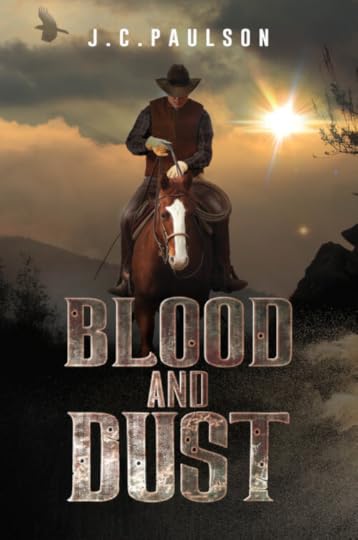
Struggling mightily while writing Griffin’s Cure, the fourth novel in my mystery series, a nightmare intervened.
Not mine. My husband’s.
He described a horrific scene in which, not being a doctor, he had to save someone’s life using only his goldsmithing skills. A challenge, to be sure.
He asked me to write it down, to help him make sense of it (and, I suspect, to undam my writer’s block) but I found it impossible to place the dream in the present. Before I knew it, I had a chapter situated in the early days of the Northwest Territory of Canada, some 25 years before my home of Saskatchewan became a province.
Husband became James Sinclair, named for two of his ancestors. Sinclair became a Toronto-born machinist turned goldsmith, accused of a crime he did not commit. Before I knew it, young James was riding for his life across half the country on a horse named Buck, heading for a town not yet served by the railroad to evade those chasing him.
Along the way, he meets all kinds of people. Very bad men sent west by James’s accuser, a powerful industrialist. Métis traders following a towering and intuitive leader. A beautiful young woman who lures him into a passionate encounter.
Once he reaches Moose Jaw, his life changes. He becomes part of the community and decides that should the pursuing gang find him there, he will make a stand. He has had enough of running.
And so, a nightmare inspired Blood and Dust, a novel of historical fiction, perhaps also described as a western and in part a romance.
I am quite sure the hours of research outnumbered the hours of writing. I read much of Bill Waiser’s book Saskatchewan: A New History and spent hours online trying to understand how the railroad was built, when it arrived in Moose Jaw, how big the town was at the time, and so many other details.
And so, after two years of writing, researching, finding a publisher — Black Rose Writing, editing and marketing, the novel has landed. It almost seems surreal.
I did, by the way, manage to finish Griffin’s Cure. Blood and DustPublished by Black Rose Writing, Feb. 17 2022https://www.blackrosewriting.com/historicaladventure/bloodanddustAnd available on Amazon mybook.to/BloodAndDust

